|
Home | Search | The Artists | Teaching | Hiring | About This Site | Contact Us |
|||||
|
Norwegian Rosemaling Rosemalers
might paint on just about anything!
How does she do it? Before she begins to paint a wooden item, Lois first sands it. Next she chooses the background paint. In most cases she’ll apply a coat of paint, sand that, and apply a second coat. Then the piece is ready to decorate.
Sometimes Lois paints freehand. That means she doesn’t sketch a design first; she just starts painting. She paints freehand if she’s doing an asymmetrical design, like in the Telemark style. “I find designs or patterns traced on just get in the way, so I would much rather just create as I’m going,” she says.
Rosemaling colors To create their artwork, rosemalers rarely use paint right out of the tube, with the exception of perhaps black or white. Colors are always mixed. “We try to tone them down to create muted shades rather than bright brilliant colors. You don’t want those blues and greens or yellows that say, ‘Hi, how are you?’ before you get there,” Lois said. “You want them to be soft.”
Vibrant colors may be non-traditional in rosemaling done today in the United States, but they might have been used in older Norwegian paintings. Think about this story Lois tells: “There are pieces...in Norway that friends of mine have told me about. They were allowed to visit some attics or storage
areas on some of the farms in the countryside, and were able to see some
Flowers, scrolls and roots
Every rosemaling design needs a root, much in the same way flowers and plants have roots. All flowers and scrolls can be traced back to a root. “When I do scrolls, I start at the outside and pull
If you were a rosemaler, would you paint toward or away from the root? Try the two methods to decide. To see Lois make a flower by pulling her brush stroke towards the root, click through this slide show. Are flowers and scrolls the only images in rosemaling? No! Scenes of mountains, buildings, trees, waterfalls, and lakes done all in one color are prominent in the Valdres style of rosemaling. This surprises some folks. “Most people say, ‘That’s rosemaling?’ But many of the old pieces did have these scenes on them,” Lois says. Find out even more about traditions in rosemaling on the next page! |

For Educators: |
||||
|
|
|||||
|
Home | Search | The Artists | Teaching | Hiring | About This Site | Contact Us |
|||||


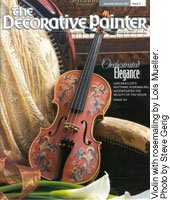
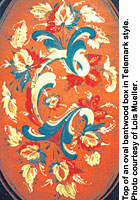 Lois
decides which style she’ll follow. You’ll find many traditional styles of rosemaling, each named after their home region in Norway.
Lois mostly paints in
Lois
decides which style she’ll follow. You’ll find many traditional styles of rosemaling, each named after their home region in Norway.
Lois mostly paints in 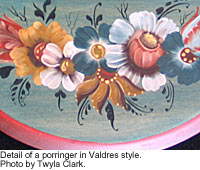
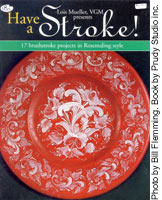 But Lois has fun
with colors too. One of her recent rosemaling instruction books is called,
“Have a Stroke.” In it, she encourages using daring reds with white designs.
“People love it,” she says, “but it’s nontraditional. The colors may not be
traditional but the designs are.”
But Lois has fun
with colors too. One of her recent rosemaling instruction books is called,
“Have a Stroke.” In it, she encourages using daring reds with white designs.
“People love it,” she says, “but it’s nontraditional. The colors may not be
traditional but the designs are.” 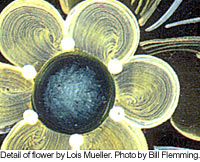
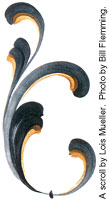 To
tell rosemaling from other types of painting just look for the “scrolls.”
Scrolls are decorative S and C strokes that are in most rosemaling designs.
To
tell rosemaling from other types of painting just look for the “scrolls.”
Scrolls are decorative S and C strokes that are in most rosemaling designs.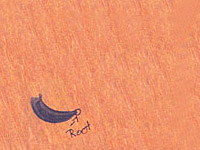 them toward the
root,” Lois says. “There are other rosemalers that can start at the root
and pull the stroke out to create the scroll, but I prefer the look I get when
I pull the stokes toward the root.”
them toward the
root,” Lois says. “There are other rosemalers that can start at the root
and pull the stroke out to create the scroll, but I prefer the look I get when
I pull the stokes toward the root.”